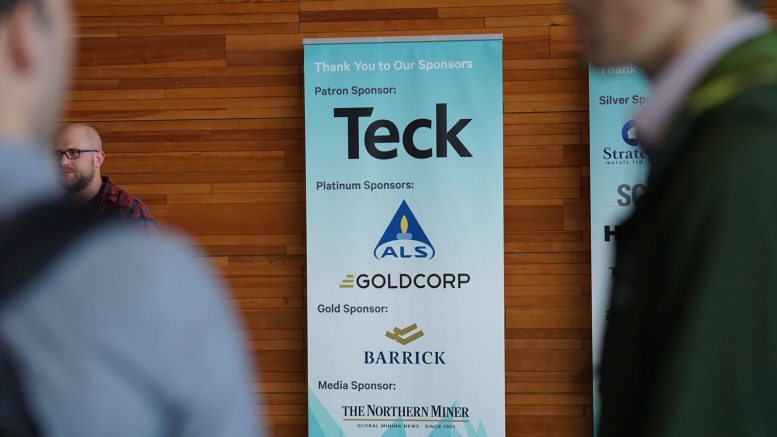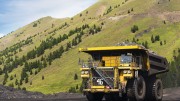VANCOUVER — Sean Roosen’s Osisko group of companies is among a rare breed of mining-focused entrepreneurial firms that have flourished over the past decade despite frigid capital markets and low commodity prices.
The group emerged as a major financial player following the $4.3-billion sale of Osisko Mining’s flagship Canadian Malartic gold mine in mid-2014 and now provides alternate capital funding to explorers and miners via stream financings, equity placements and related partnership models.

The mill at Agnico Eagle Mines and Yamana Gold’s Canadian Malartic gold mine in Quebec. Credit: Agnico Eagle Mines.
On Jan. 23, Roosen took the stage at thee Association for Mineral Exploration’s (AME) annual Roundup conference to discuss the state of capital markets, and the challenges the mining industry must overcome to combat falling discovery rates and a lack of interest from generalist investors.
“There’s a lot of money in the system right now, but not a lot of it passing down into our sector as things are changing dramatically within the financial machine,” commented Roosen, who now serves as chairman and CEO of Osisko Gold Royalties (TSX: OR; US-OTC: OKSKF), among other roles.
“The transition in capital markets has been staggering as we move toward a technology-based system. The introduction of exchange-traded funds, index funds, and advanced trading systems has really eaten our lunch. We’ve also seen that shift from active to passive investing. Where is mining capital going to come from? That’s our great challenge.”

Osisko Gold Royalties chairman and CEO Sean Roosen.
Osisko Royalties now sits atop a broader mining empire that includes 16 cash-flowing assets that generated in excess of $103 million in revenue over the first nine months of 2017.
The company had $109 million in cash at the end of the third quarter and closed a $300 million bought-deal offering of convertible debentures in November. It now holds 130 streams and royalties on assets around the world.
Osisko’s biggest use of its capital has been to re-invest in exploration and development activities across Canada. The company holds a $411-million mining investment portfolio and helped to fund over 900,000 metres of drilling last year.
Osisko Mining (TSX: OSK) has leveraged home-field advantage in Quebec, via government support and super-flow through share systems, to rapidly advance its flagship Windfall gold project towards development. It drilled roughly 800,000 metres at the project in 2017.
Meanwhile, the Osisko group holds a 49% equity stake in Barkerville Gold Mines (TSXV: BGM), which is on pace to complete 157,000 metres of drilling in the historic Cariboo mining district in southcentral British Columbia.
“Quebec and British Columbia remain our preferred jurisdictions,” Roosen said. “We’re looking at declining production pretty much across the board right now, and exploration hasn’t taken place to any great extent in recent times. We’ve tried to be part of the solution to that problem by becoming, I believe, the biggest exploration group in the world in terms of drilling. But we need to look at the landscape and realize these new discoveries are not forthcoming.”

Drillers at Barkerville Gold Mines’ Cow Mountain gold project in the Cariboo mining district of British Columbia. Credit: Barkerville Gold Mines.
Roosen added that the group tries to “help as many junior companies as possible” through funding, marketing efforts and leveraging the Osisko brand. The goal is to provide capital for earlier-stage generative work that can create enough value to grant smaller market capitalization companies access to often-elusive institutional cash.
The company’s most-recent effort includes the consolidation of 500 sq. km in the historic Bathurst base metals camp in New Brunswick under the Osisko Metals (TSXV: OM; US-OTC: BWMXF) banner. It expanded the base metal exposure in January via the $35-million deal to acquire Pine Point Mining (TSXV: ZINC) and its Pine Point project near Hay River in the Northwest Territories.
“I’d prefer more exposure to copper and zinc, honestly, but we’ve always been a gold company,” Roosen commented. “We’ve heard some buzz that royalty and streaming companies are bad for the business, but we’ve been able to generate a lot of interest in junior mining with our investments. So it can be done, though obviously it’s still tough. I think our industry needs to act more collectively than we’ve ever been and come together on projects.”

At the Pine Point zinc project near Hay River in the Northwest Territories, from left: Jamie Levy, Pine Point Mining (PPM) president and CEO; Jeff Hussey, Osisko Metals president and CEO; Kerry Knoll, PPM executive chairman; Killian Charles, Osisko vice-president of corporate development; Robin Adair, Osisko vice-president of exploration; Tim Smith, PPM vice-president of operations; and John Key, PPM COO. Credit: Osisko Metals.
Osisko estimates it invested $1.3 billion in the mining space last year, and has another $500 million in capital its keen to get into the market in 2018. Roosen predicts that investment will again largely be directed to Canadian projects, where the company can leverage flow-through equity financing and existing relationships to continue aggressive exploration programs.
“There are not a lot of options left in the pantry in terms of shovel-ready projects,” Roosen said. “Exploration companies are having a hard time with financing and there are not a lot of options in the system to fund that type of work. Meanwhile, the larger companies have broadly cancelled and slashed exploration programs. But we believe all wealth is created at the drill bit.”




Be the first to comment on "Roundup 2018: Osisko’s Roosen on tackling ‘tough’ markets"